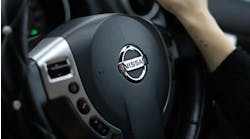Mark Wing can’t help but laugh when recalling some of the dealership parts departments he has witnessed over the years.
They all seemed to share the same overall aesthetic: that of a dank, windowless repository.
“It used to be, parts departments, when dealerships were built, were always kind of an afterthought,” notes Wing, the parts manager at Miller Toyota in Manassas, Va. “The emphasis was on sales and service. Whatever space was left over, the parts department got.”
Wing, who has worked in the auto industry for more than four decades, used to lead the parts department at Miller Toyota’s former facility, which was built in the 1970s. The shipping and receiving area offered his staff its only slivers of daylight back then. So, when his employer began toying with the idea of a massive renovation a few years back, Wing brought plenty of suggestions to his bosses’ doorsteps.
Most importantly, he knew his department’s less-than-ideal design was sapping it of efficiency. And, he knew that the old, roughly 40-year-old dealership lacked some necessary elements, like a freight elevator.
Of course, it would take some convincing before Miller Toyota’s ownership would fund for Wing’s design suggestions.
The Problem
In Miller Toyota’s former layout, the parts department was originally “a hodgepodge of bins, and even hand-built, wooden bins,” Wing recalls. “There was no rhyme or reason with the way everything was laid out, logistically.”
That old parts department was pretty standard in size, but had become unwieldy. Plywood shelving was interspersed with modern, metal parts bins, for example.
And, that old facility, which featured a mezzanine, lacked an elevator. That meant that anything large and heavy had to be hoisted up a flight of stairs.
“Sheet metal, bumper covers, that kind of stuff, you had to carry that up,” Wing explains. “Or throw it up on the mezzanine.”
That old parts department layout, in short, was far from ideal.
The Solution
Miller Toyota’s newly designed facility ended up being years in the making. The groundbreaking was preceded by months of meetings between the dealership’s leaders.
“Our dealer principal, our owner, had everybody from all departments involved when we built the new building,” Wing says. “We had meetings for two years … and went through probably five different architectural plans.
“There had to be some compromises on all sides to make everything work. But parts was fully respected, and the owner listened. We all had access to the architectural plans, the electrical layout, the computer layout, everything. We had direct input.”
Along the way over the last few years, Wing learned a few things, too. Namely, he learned that you need to occasionally fight for facility upgrades. For instance, after closely studying early plans for the dealership remodel, the parts manager argued in favor of a larger freight elevator than initially planned for, since he knew his department would consistently see pallets of bulk air filters and oil filters for storage in the basement.
And, the initial drawings of the new facility didn’t appear to provide enough counter space in the parts area. Wing saw to it that his revamped department was given space for ample computer terminals, and even made sure a wall was added between his retail counter and wholesale counter.
“That may seem like a small item, but, when you’re … in a dealership, there’s noise,” Wing explained. “At a shop counter, you might not want to interfere with what’s going on on the retail counter. So we kind of moved that.”
His departmental redesign also reminded Wing of the importance of maintaining order when overseeing an inventory. That’s why every oil filter and bumper cover has its designated place in the facility these days.
The fast-moving parts are kept near the shop counter. Parts employees have most of these parts within reach, in drawers. Wing and his cohorts use scanners to check in orders and keep tabs on inventory. And, clear plastic tags are placed on each bin within the department, clearly noting the parts that reside inside (if the tag is blank, it denotes an empty bin.)
The Results
When the dust settled, Wing’s parts department was a hodgepodge no more. In fact, it was pristine. He was left with a department that stretched across three floors, essentially featuring a basement with two sizeable floors above it.
“Moving into the new building here, we basically outfitted two floors with brand-new stuff,” Wing noted. “And, in the basement I was able to utilize the good stuff from the old building, to create bins.”
Miller Toyota’s facility overhaul left the parts department on fine footing. Wing currently oversees a department that typically has around $425,000 in inventory on hand, all filed away neatly throughout its three expansive floors.
Wing notes, light heartedly, that his parts department no longer resembles “a cave.” These days, productivity reigns, and a fair amount of light streams in.
“As far as the efficiency from the old building to the new building,” he notes, “it’s day and night.”



